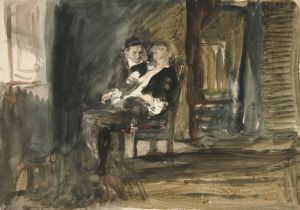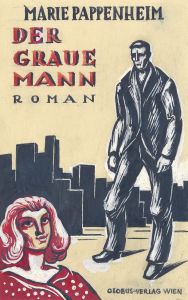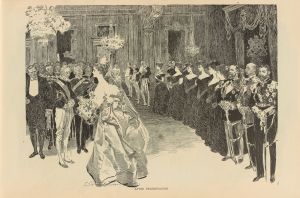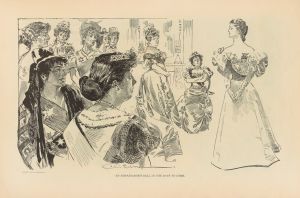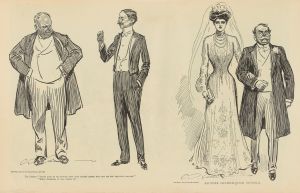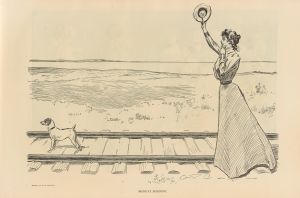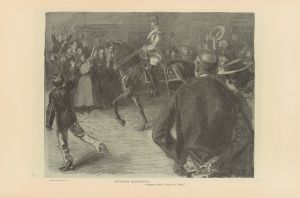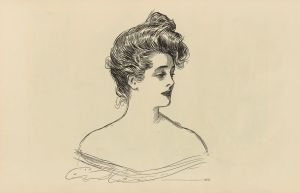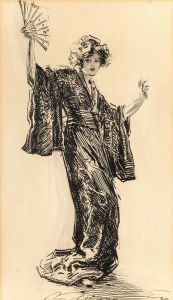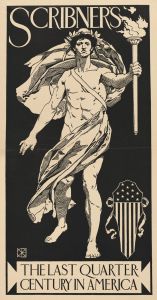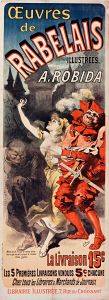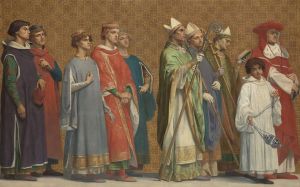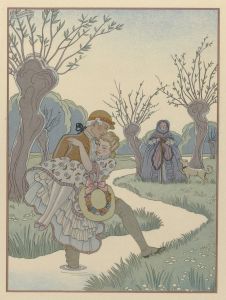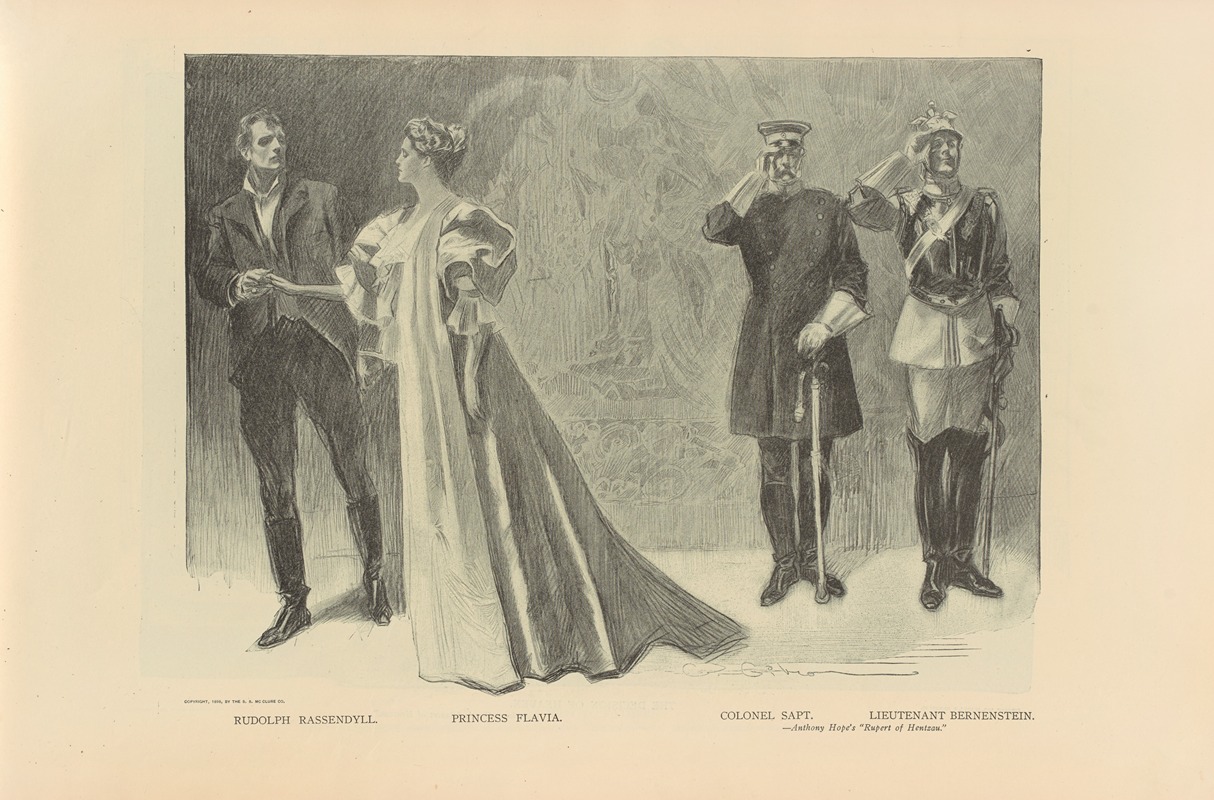
Rudolph Rassendyll. Princess Flavia
A hand-painted replica of Charles Dana Gibson’s masterpiece Rudolph Rassendyll. Princess Flavia, meticulously crafted by professional artists to capture the true essence of the original. Each piece is created with museum-quality canvas and rare mineral pigments, carefully painted by experienced artists with delicate brushstrokes and rich, layered colors to perfectly recreate the texture of the original artwork. Unlike machine-printed reproductions, this hand-painted version brings the painting to life, infused with the artist’s emotions and skill in every stroke. Whether for personal collection or home decoration, it instantly elevates the artistic atmosphere of any space.
"Rudolph Rassendyll. Princess Flavia" is an illustration by the American artist Charles Dana Gibson, known for his iconic creation of the "Gibson Girl," which became a cultural symbol in the late 19th and early 20th centuries. This particular illustration is inspired by the characters from the novel "The Prisoner of Zenda," written by Anthony Hope and published in 1894. The novel is a classic adventure tale set in the fictional European kingdom of Ruritania and revolves around themes of romance, political intrigue, and mistaken identity.
Charles Dana Gibson (1867-1944) was a prominent illustrator whose work appeared in various magazines, including Life, Harper's Weekly, and Scribner's. His illustrations captured the essence of the era and often depicted fashionable society, with a focus on the independent and modern woman of the time. The "Gibson Girl" became a representation of the idealized American woman, characterized by beauty, confidence, and a sense of independence.
"The Prisoner of Zenda" tells the story of an Englishman named Rudolf Rassendyll, who bears a striking resemblance to the king of Ruritania. Rassendyll becomes embroiled in a plot to impersonate the king after the monarch is kidnapped by his treacherous half-brother, Duke Michael. During his adventure, Rassendyll falls in love with Princess Flavia, the king's betrothed, creating a complex web of loyalty and love.
Gibson's illustration "Rudolph Rassendyll. Princess Flavia" captures the romantic and adventurous spirit of the novel. The artwork likely depicts a scene involving the two central characters, Rassendyll and Princess Flavia, highlighting the tension and affection between them. Gibson's style is characterized by detailed line work and an ability to convey emotion and narrative through his illustrations.
The illustration would have been part of a series or a standalone piece that accompanied the novel or related articles in periodicals of the time. Gibson's work was instrumental in bringing literary characters to life, providing visual context and enhancing the reader's imagination. His illustrations were widely appreciated and contributed to the popularity of the stories they accompanied.
While specific details about the creation and publication of "Rudolph Rassendyll. Princess Flavia" are limited, it is clear that Gibson's work played a significant role in the visual culture of the period. His ability to capture the essence of characters and stories made his illustrations memorable and influential in the world of art and literature.
Overall, Charles Dana Gibson's illustration of Rudolph Rassendyll and Princess Flavia is a testament to his skill as an artist and his contribution to the visual interpretation of literary works. His illustrations continue to be celebrated for their artistic merit and their role in shaping the cultural landscape of the time.





